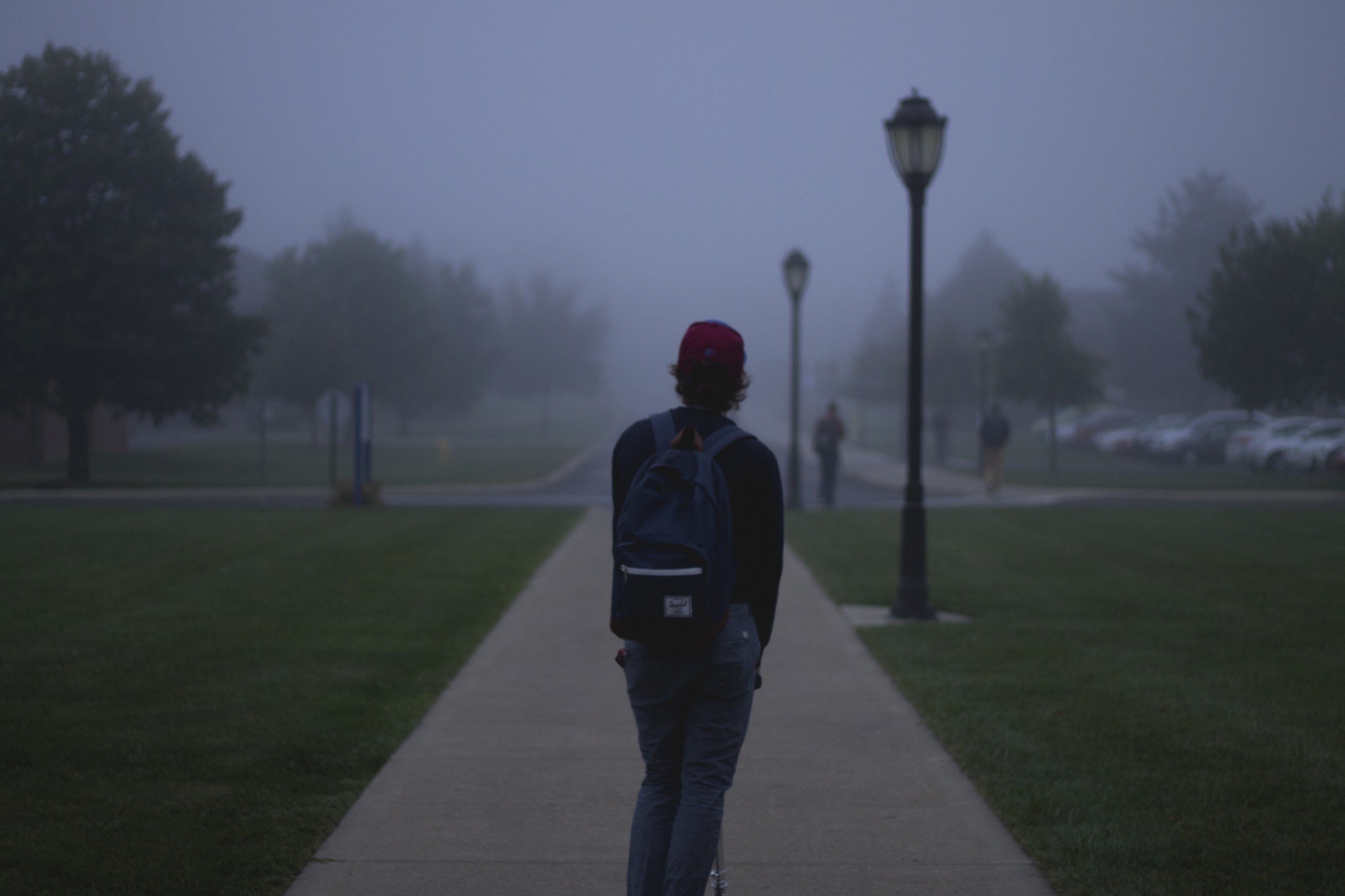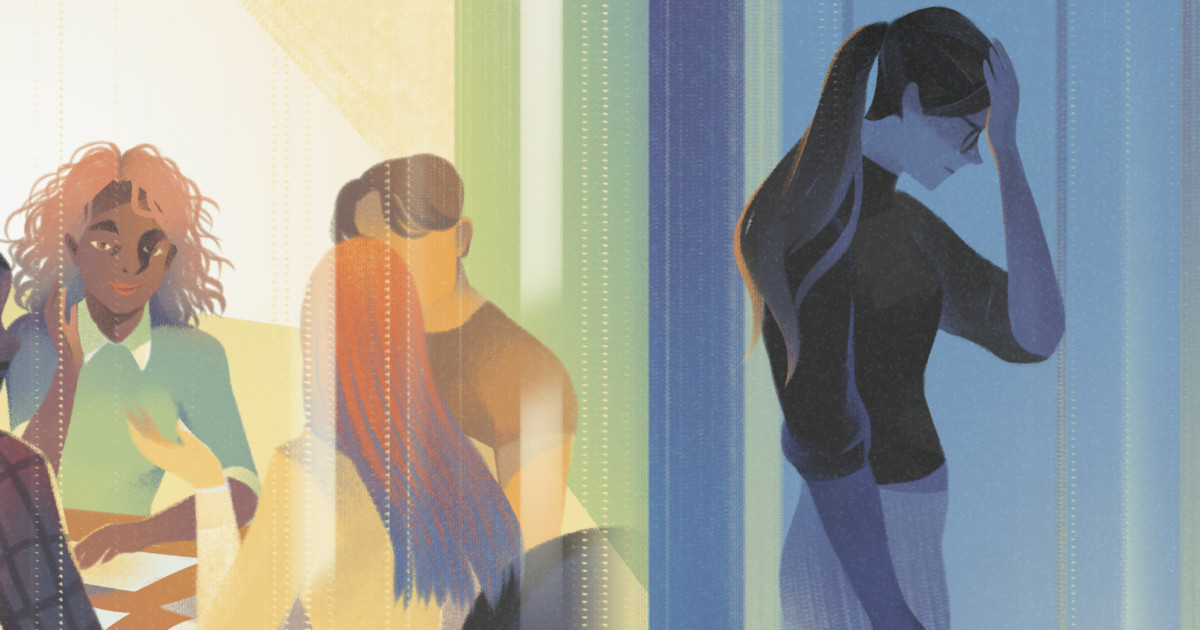Dropping out and making it back with mental illness
RACHEL* was anxious, uncomfortably anxious, in the spring of 2008. Her parents and teachers reassured her that it was just nerves about going to college that fall; she was certain that it was something more.
At the time, everything was already in motion for her to leave for school in late August. She asked her parents to take her to a therapist, who said the same thing: her stress was tied to the upcoming milestone of leaving home and going off to college. She’d be fine once she was settled on campus, her mother promised.
Once she moved into her freshman dorm, things did not get better. She didn’t feel a sense of belonging at her new school, and her anxiety escalated. By October, she was certain she wanted to transfer out, but her parents encouraged her to stay. Throughout fall semester, she poured her energy into classes, earning straight A’s.
Spring semester was worse. She slept all day, missed class, cried frequently. Every day felt worse than the one before. In February, she called her parents. “I can’t do this anymore. I’m going to commit suicide up here,” she told them.
Her parents came the next day. They took her home, and she withdrew on medical leave for the semester with no intention of going back.
“I didn’t want to die,” she said. “But I didn’t know any other way to express what I was going through. I couldn’t keep living like that, and I didn’t know what to do.”
Every year, more than 60 percent of students who leave college campuses do so because of a mental health condition. (The other fraction of the pie is mostly rounded out by students struggling with the financial burden of a university education.)
Students who experience depressive symptoms on campus are at risk of taking time away from classes or dropping out, confirms a study by the Center on Young Adult Health and Development. In “Discontinuous College Enrollment: Associations With Substance Use and Mental Health,” researchers also found that students entering college with a diagnosis of a mental health condition fared better than those with untreated difficulties, as they were already comfortable seeking out therapy and had a vocabulary to talk about their depression or anxiety when it reared up.
Expressing her depression and anxiety earlier in high school might have helped Rachel with the college transition, but she didn’t understand what was wrong or how to fully express what she was feeling.
“My anxiety didn’t get in the way of my school work or my sports,” she said. “But I kept saying ‘There’s something in my head that’s not right.’”
For young adults like Rachel, college is often the tipping point.
“When you start college, you have all this freedom, all this opportunity,” said Darcy Gruttadaro, the director of the National Alliance for Mental Illness’s Child and Adolescent Action Center, (NAMI). “And then you start to experience something new, scary, devastating. It’s true of any chronic condition, but especially mental health because of the myths around it. People feel like, ‘Why me?’ The people who come to college with diagnosis have already grappled with it, accepted it, and received support. But when you’re new to the whole college experience, then you throw in a mental health condition, having to deal with that along with all the other new factors is a lot.”
As more people who have mental health conditions are going to college, and still others are experiencing the onset once they arrive, administrations are grappling with the best practices to support these students on campus and, ultimately, through to graduation.
In a five-year national study, one-third of students who left college during their first year never returned; of those who did return, only 17 percent earned a bachelor’s degree.
Completion is a near-universal goal. For college administrators, it’s a marker of their school’s success. For students, a diploma is a marker of personal success and, often, the gateway to a better job.
There isn’t a clear path to this goal, however. It’s widely acknowledged that providing counseling services on campus is helpful, but there is no guarantee that students will seek out those services. In fact, according to a national survey by NAMI, half of the students who leave campus for mental health reasons never access any campus counseling services.
For Rachel and students like her, the stigma surrounding mental illness is a barrier to seeking help.
“I think college kids are shameful about using those services,” she said. “The assumption is, you’re going to college, you’re going to meet cool people, booze your face off and then graduate. If you’re not having fun, you’re like, ‘What am I doing wrong?’”
College enjoys a reputation of being the best years of your life, setting an expectation that doesn’t leave space for coping with depression or anxiety. Even if the national dialogue about mental health has reached a student’s own campus in a useful way, personally admitting that you need to see a counselor can be difficult.
Overcoming the stigma around seeking help for mental health issues is one of Gruttadaro’s top priorities at NAMI. But she’s also aware of the tricky politics of allowing students the autonomy to take care of their health, studies, and social life while ensuring they aren’t at risk of harming themselves or the broader community.
Much of the controversy around how to strike this balance plays out in the rules for leaving and reentering school because of mental illness.
“It’s fair for schools to say that they want you well enough to return to campus, but they also don’t want to be overly intrusive into people’s lives,” she said. “If schools maintain punitive policies, it really discourages students from coming forward.”
Some students may already be seeing a counselor on campus or have scheduled an appointment with Counseling and Psychiatric Services when they decide that they want to take time away from school for mental health reasons. In these cases, the students fill out paperwork to take a semester off campus to reach a better place with their mental health.
But not all students who leave do so on their own volition: there are times when campus administrators remove students who they think are at risk of harming themselves or others.
In either situation, the conditions for return can become complicated. Some schools completely bar the students from campus during their time away, often with the requirement that they prove completion of medical treatment, a certain amount of time without symptoms, or other assessments, before being allowed back on school grounds. Others mandate therapy and counseling with regular check-ins with the campus counseling center.
At the University of Georgia, where students who attempt suicide are not allowed on campus for a probationary period, students have spoken out about feeling pushed out by the school. At Columbia University, students have been critical of the school’s drawn-out process for readmitting students who have taken a semester off for mental health reasons.
Even schools that have responded effectively to the mental health needs of their students still struggle with striking the right balance between keeping students safe and allowing them autonomy. In 2004, a straight-A sophomore at George Washington University voluntarily admitted himself to the hospital when he felt that coping alone with his depression after a friend’s suicide wasn’t healthy. While in the hospital, he received notice that he was barred from campus for exhibiting “dangerous behavior.”
Instead of jumping through the various administrative hoops to regain his status as a student at GW, he chose to drop out and complete his studies at the University of Maryland.
In response, the Bazelon Center, a DC-based organization that advocates for the legal rights of people with mental illnesses, filed a claim on his behalf and won the case. Afterwards, the university rewrote policies and procedures to help students work through mental health issues on campus. A decade later, in the spring of 2014, three students committed suicide on the school’s Mt. Vernon campus. The university reexamined its policies and decided to redesign its mental health supports, consolidating all of the mental health services all into a single building and adding peer support services.
In the absence of national guidelines around services for mental health on campus, the Bazelon Center has created a model policy for colleges. Among the key policies are acknowledging mental health problems without stigmatizing them, allowing flexible amounts of leave time, and permitting students on voluntary leave to visit campus friends and attend school events.
“Too often colleges and universities lack a comprehensive plan for addressing such situations, or respond to these students in punitive ways, requiring them to leave or evicting them from university housing,” the guide states in its opening.
No path through mental health challenges is identical, and forward-thinking universities are changing their policies to reflect this insight. Some students experience slow but steady improvement, some progress and fall back intermittently, and some worsen further before heading toward wellness.
When Rachel returned home from college, her depression deepened. She lost 20 pounds and passed her days alternately sleeping and crying. “I felt completely out of control,” she said. “I just felt like I was losing my mind and nothing was going to make it better.”
Her mom struggled to support her by suggesting activities, but for Rachel, this only made things worse. “My mom didn’t understand that going to the mall wasn’t going to make me feel better,” she said.
A few weeks into being home, she was deeply suicidal again. Her parents took her to the psychiatric ward at the hospital. “I knew I didn’t want to kill myself, but I had to be there,” she said. “So again, I felt very trapped.” After five days of group therapy and a blur of other activities, she was able to go home.
Rachel found a therapist she connected with and began seeing her regularly. Soon, she started applying to colleges and was admitted to a number of schools. She didn’t want to go back to where she had been, but she knew she wanted to be on a campus. She chose a small, liberal arts college not far from home, and started over.
“I was scared,” she said. “I had just had the worst three months of my life and now I was in a new place where I didn’t know anyone. I thought, ‘I’ve been in a psych ward. Are people going to think I’m weird?’ ”
By the time she arrived on campus, Rachel had been seeing her therapist regularly and felt more prepared to recognize and manage her depression. Her perseverance and optimism, which were forced at first, have become her signature qualities. She made friends with a group of non-judgemental young women who, eight years later, continue to support one another. “For people my age, friends are huge,” she said.
Rachel was one of the small percentage of interrupted students who do make it to graduation. She got her degree in four years, despite missing a semester. She recently earned her Masters in Criminal Justice, a two-year program that she completed in one, and continues to manage her depression.
She believes the best thing colleges can do to support students with mental health is to reduce the stigma associated with it, though she is quick to dismiss formal gestures like posters on campus. Instead, she says, we need to normalize mental health by talking about it.
“I try to talk about it a lot. I don’t try to hide it. I think this makes it easier for people who have never experienced mental illness to know that it happens. I’m like, ‘Here’s me.’ I have things that are good about me and things that I struggle with. It doesn’t have to be weird or uncomfortable for anyone else.”




